Hollow spots under vinyl plank flooring can be a frustrating and even dangerous issue for homeowners. These hollow spots often produce an annoying hollow sound when you walk across the floor, and can even cause the floor to feel unstable or spongy in certain areas. If left untreated, these hollow spots can cause the vinyl planks to warp or buckle, leading to costly repairs or even a complete replacement of the floor.
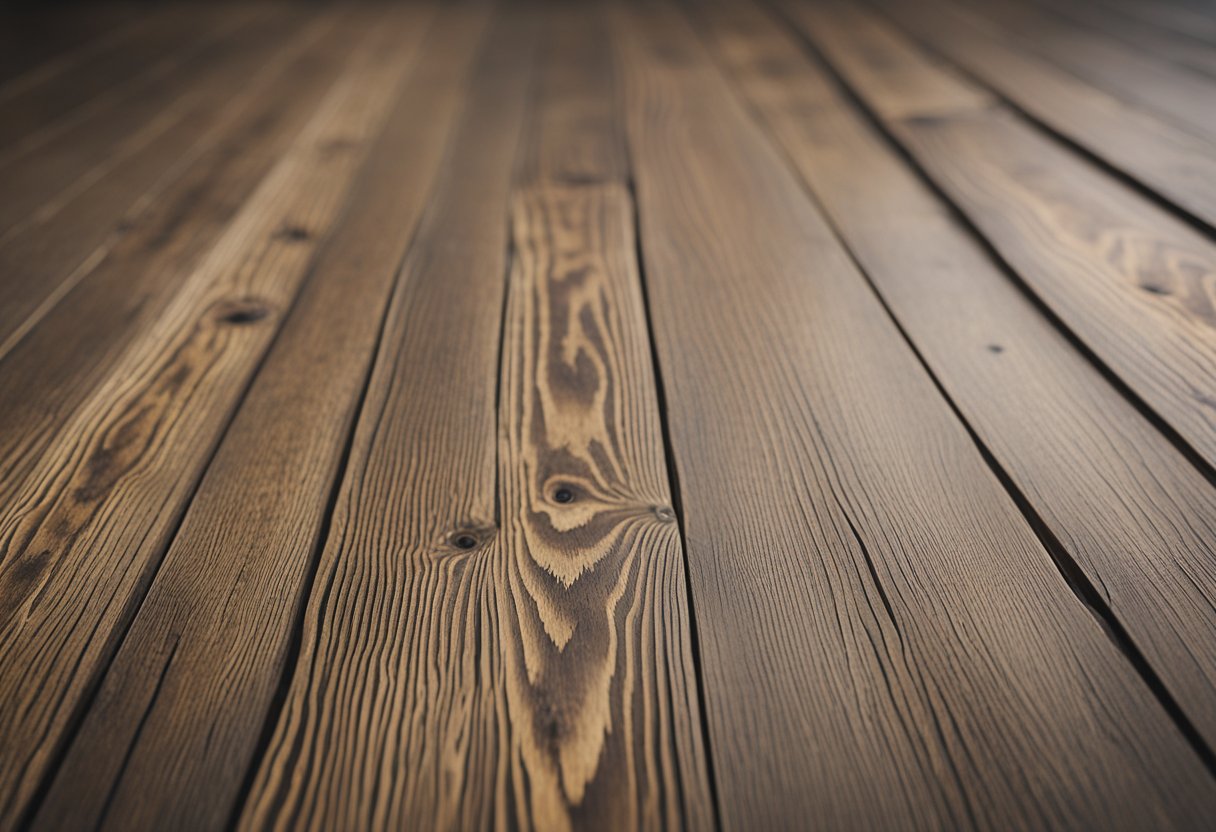
Understanding the causes of hollow spots is the first step in preventing and repairing them. These spots can be caused by a variety of factors, including improper installation, an uneven subfloor, or a lack of adhesive between the vinyl planks and the subfloor. Identifying the cause of the hollow spots is crucial in determining the best course of action to take in repairing them. In this article, I will explore the causes of hollow spots under vinyl plank flooring, as well as the materials and tools needed to repair them.
Key Takeaways
- Hollow spots under vinyl plank flooring can cause a variety of issues, including an annoying hollow sound and an unstable floor.
- Understanding the causes of hollow spots is crucial in preventing and repairing them.
- Properly identifying the cause of the hollow spots and using the right materials and tools can help ensure a successful repair.
Understanding Hollow Spots
As a flooring expert, I have seen many cases of hollow spots under vinyl plank flooring. These spots can be caused by several factors, including subfloor issues, installation errors, and product defects. Understanding the root cause of the problem is essential to finding the right solution.
Hollow spots are areas where the vinyl plank flooring does not adhere properly to the subfloor, creating a gap between the two layers. This gap can create a hollow or spongy sound when walked on, and can also cause the flooring to shift or buckle over time. In some cases, the hollow spots can be felt when stepped on, creating a soft spot in the flooring.
One common cause of hollow spots is an uneven subfloor. If the subfloor is not level or has dips or high spots, the vinyl plank flooring may not adhere properly in certain areas. In other cases, the adhesive used during installation may not have been applied evenly, causing the flooring to lift in certain areas.
Another possible cause of hollow spots is a product defect. If the vinyl plank flooring was manufactured improperly or has a defect in the adhesive layer, it may not adhere properly to the subfloor, causing hollow spots.
It is important to note that hollow spots under vinyl plank flooring are not always a sign of a serious issue. In some cases, they may be purely cosmetic and not affect the performance of the flooring. However, if you notice hollow spots in your vinyl plank flooring, it is important to have them inspected by a professional to determine the cause and any necessary repairs.
Overall, understanding the causes of hollow spots under vinyl plank flooring is essential for maintaining the integrity and longevity of your flooring. Whether for informational purposes or as a homeowner experiencing this issue, knowing the root causes and potential solutions can help you make informed decisions when it comes to your flooring.
Causes of Hollow Spots
As a flooring specialist, I have seen many cases of hollow spots under vinyl plank flooring. These issues can be caused by several factors, including moisture, uneven sub-floor, improper installation, temperature changes, and water damage.
One of the most common causes of hollow spots is moisture. If the sub-floor is not properly prepared, moisture can seep into the flooring and cause it to warp or buckle. This can lead to air pockets forming underneath the vinyl planks, resulting in a hollow sound when walked on.
Another cause of hollow spots is an uneven sub-floor. If the sub-floor is not level, the vinyl planks may not lay flat, resulting in gaps and air pockets. This can also occur if the sub-floor is not properly cleaned or if debris is left behind.
Improper installation can also lead to hollow spots under vinyl plank flooring. If the planks are not properly secured or if the adhesive is not applied evenly, air pockets can form underneath the planks. This can also occur if the planks are not properly acclimated before installation.
Temperature changes can also cause hollow spots to form. If the temperature in the room fluctuates, the vinyl planks can expand and contract, leading to gaps and air pockets. This can be prevented by maintaining a consistent temperature in the room.
Finally, water damage can cause hollow spots under vinyl plank flooring. If water seeps into the sub-floor or if the planks are exposed to water for an extended period, they can warp and buckle, resulting in air pockets forming underneath.
Overall, it is important to properly prepare the sub-floor, acclimate the planks before installation, and follow proper installation techniques to prevent hollow spots from forming under vinyl plank flooring.
Preventing Hollow Spots
As a flooring professional, I have seen many cases of hollow spots under vinyl plank flooring. These spots can be caused by several factors, including poor installation, subfloor issues, and moisture problems. However, there are some steps you can take to prevent them from occurring in the first place.
Use the Right Underlayment
One of the most important factors in preventing hollow spots is using the right underlayment. The underlayment provides a cushion between the vinyl planks and the subfloor, which helps to prevent any uneven spots from developing. Make sure that you choose an underlayment that is appropriate for the type of subfloor you have. For example, if you have a concrete subfloor, you will need an underlayment that is specifically designed for use with concrete.
Check the Subfloor
Before you install vinyl plank flooring, it is essential to check the subfloor for any issues. If there are any low spots or high spots, these can cause hollow spots to develop. Make sure that the subfloor is level and smooth before you begin installation. If there are any issues, you may need to use a leveling compound to correct them.
Acclimate the Flooring
Another important step in preventing hollow spots is to acclimate the vinyl plank flooring before installation. This means allowing the flooring to adjust to the temperature and humidity of the room where it will be installed. By doing this, you can help to prevent any warping or buckling of the planks, which can lead to hollow spots.
Use a Moisture Barrier
Moisture is one of the biggest enemies of vinyl plank flooring. If there is too much moisture in the subfloor, it can cause the planks to warp or buckle, which can lead to hollow spots. To prevent this from happening, make sure that you use a moisture barrier between the subfloor and the underlayment. This will help to prevent any moisture from seeping through and causing damage.
By following these tips, you can help to prevent hollow spots from developing under your vinyl plank flooring. Remember to always use the right underlayment, check the subfloor, acclimate the flooring, and use a moisture barrier. With these steps, you can ensure that your flooring looks great and lasts for years to come.
Identifying Hollow Spots
As a flooring expert, I have come across many cases of hollow spots under vinyl plank flooring. These spots can occur due to various reasons such as improper installation, subfloor issues, or water damage. Identifying these spots is crucial as they can lead to serious problems such as spongy, buckling, bubbling, or scratches on the surface.
One of the easiest ways to identify hollow spots is by tapping on the surface of the vinyl plank flooring. If you hear a hollow sound, it means that there is an air gap between the subfloor and the vinyl plank. You can also use a moisture meter to check the moisture content of the subfloor. If the moisture content is high, it can lead to the formation of hollow spots.
Another way to identify hollow spots is by visually inspecting the surface of the vinyl plank flooring. If you notice any bumps or irregularities, it could be a sign of hollow spots. You can also look for any signs of buckling or bubbling on the surface. These signs can indicate that there is an air gap between the subfloor and the vinyl plank.
It is important to identify and fix hollow spots as soon as possible to prevent any further damage to the flooring. In the next section, I will discuss some ways to fix hollow spots under vinyl plank flooring.
Repairing Hollow Spots
As I mentioned earlier, hollow spots under vinyl plank flooring can be caused by various reasons such as poor installation, warping from direct sunlight, or even improper subfloor preparation. Fortunately, repairing these hollow spots is relatively easy, and you don’t need to hire a professional to do it. In this section, I will guide you through the process of repairing hollow spots under vinyl plank flooring.
First, you need to locate the hollow spots. You can do this by walking on the floor and feeling for any wobbling or unevenness. Once you have located the hollow spots, you need to drill a small hole in the center of the spot. You can use a 1/8″ drill bit for this purpose.
Next, you need to inject expanding spray foam into the hole using a spray foam applicator. Expanding spray foam is an excellent choice for filling hollow spots as it expands to fill the voids and hardens into a solid material. Be careful not to overfill the hole as the foam will expand.
After injecting the foam, you need to wait for it to dry completely. This may take several hours, depending on the type of foam you used. Once the foam has dried, you can trim off any excess foam using a sharp utility knife.
Finally, you can cover the hole with a small piece of duct tape or vinyl flooring patch. This will help to hide the hole and prevent any dirt or debris from entering it.
In conclusion, repairing hollow spots under vinyl plank flooring is a simple DIY project that you can do yourself. By following the steps outlined in this section, you can easily fix any hollow spots and restore the integrity of your vinyl plank flooring.
Materials and Tools
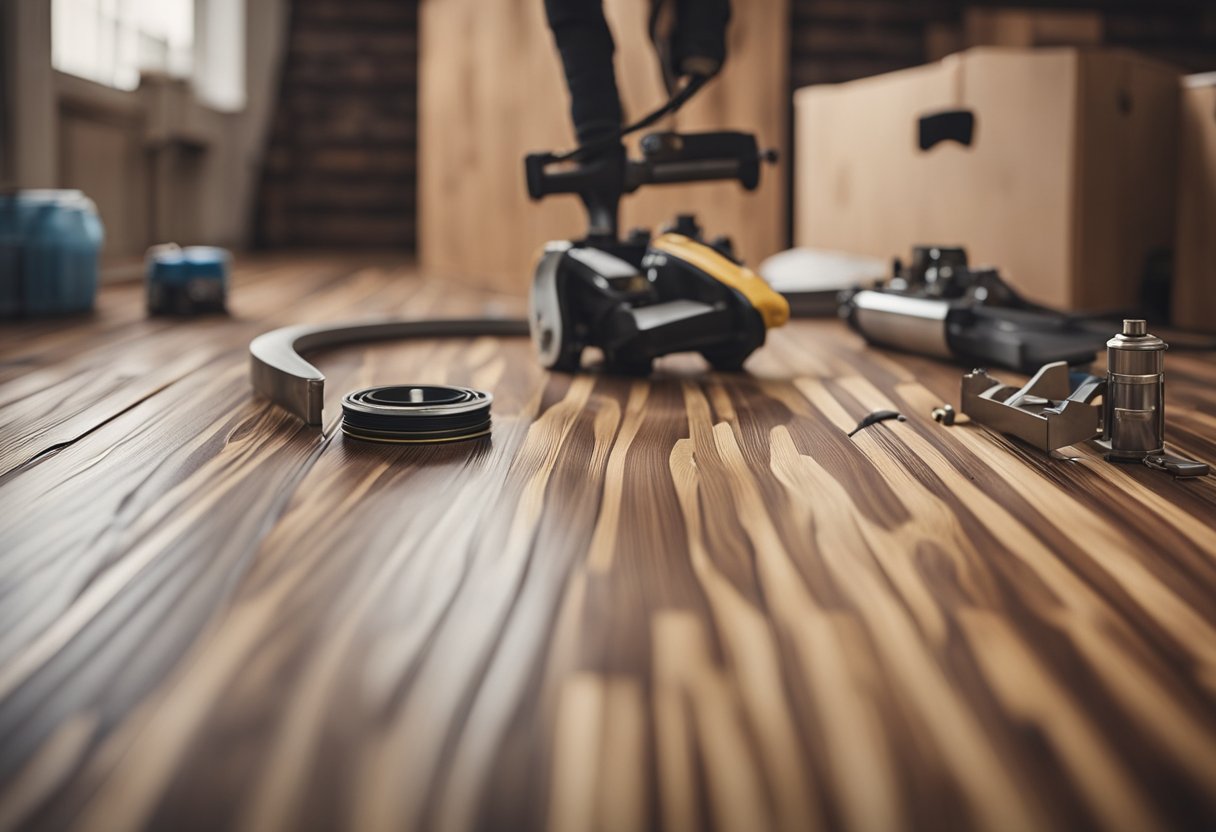
As a professional flooring installer, I have installed many vinyl plank floors and have come across hollow spots under the flooring. In this section, I will discuss the materials and tools required to fix hollow spots under vinyl plank flooring.
Materials
The following materials are required to fix hollow spots under vinyl plank flooring:
-
Flooring adhesive: A high-quality flooring adhesive is required to fill the hollow spots. I recommend using a flexible flooring adhesive that can expand and contract with the flooring. It is important to choose an adhesive that is compatible with the type of vinyl plank flooring being installed.
-
Caulk: A high-quality caulk is required to seal any gaps between the flooring and the subfloor. The caulk should be flexible to allow for movement of the flooring.
-
Floor leveling compound: If the subfloor is uneven, a floor leveling compound may be required to level the subfloor before installing the vinyl plank flooring.
-
Transition strip: A transition strip may be required to cover the gap between the vinyl plank flooring and other types of flooring.
Tools
The following tools are required to fix hollow spots under vinyl plank flooring:
-
Injector syringe: An injector syringe is required to inject the flooring adhesive into the hollow spots. The syringe should have a long, narrow tip to allow for precise application of the adhesive.
-
Drill bit: A drill bit is required to create a small hole in the vinyl plank flooring to inject the adhesive.
-
Caulking gun: A caulking gun is required to apply the caulk to seal any gaps between the flooring and the subfloor.
-
Trowel: A trowel may be required to apply the floor leveling compound to the subfloor.
-
Mop: A mop may be required to clean the subfloor before applying the adhesive.
-
Vacuum: A vacuum may be required to remove any debris from the subfloor before applying the adhesive.
Potential Risks and Warranties
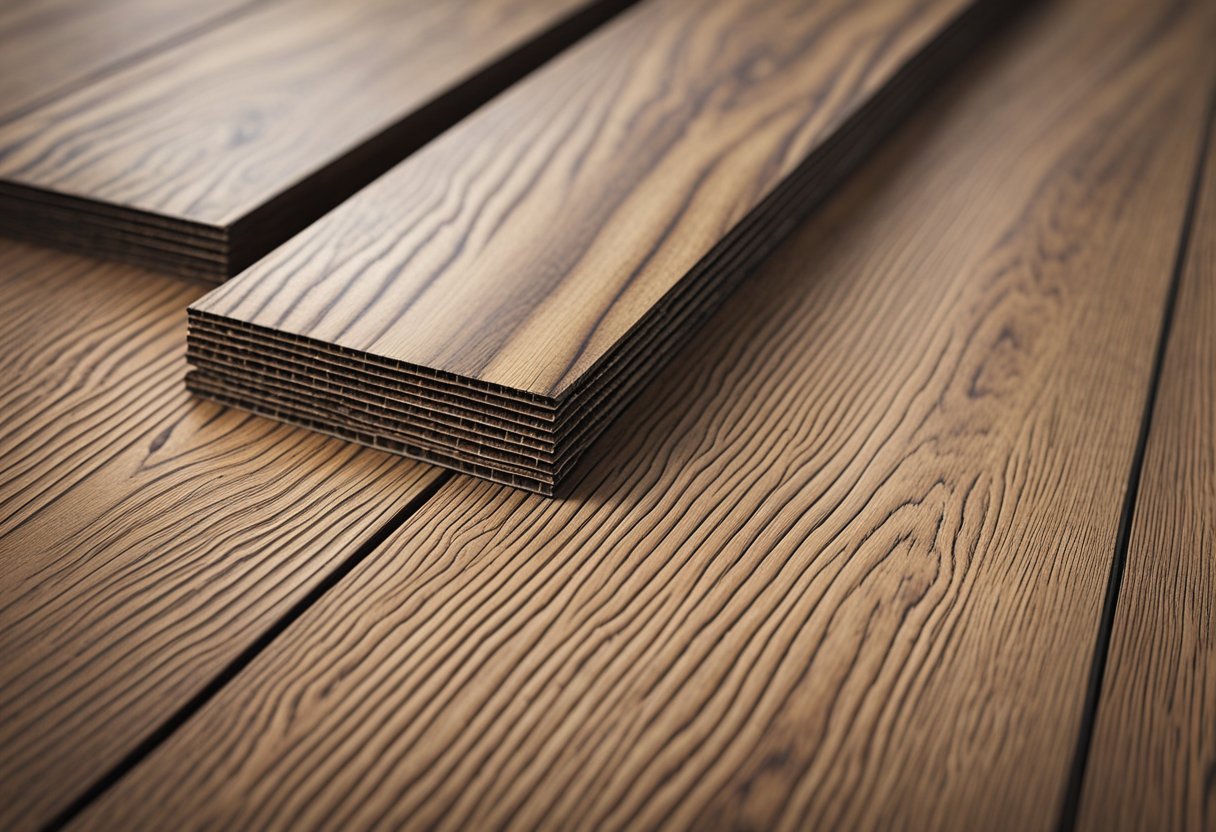
As with any type of flooring, there are potential risks and warranties that come with vinyl plank flooring. It is important to understand these risks and warranties before making a purchase or installing the flooring.
Improper Installation
One of the main reasons for hollow spots under vinyl plank flooring is improper installation. This can include not properly leveling the subfloor, not leaving enough space for expansion, or not properly securing the planks. It is important to follow the manufacturer’s installation instructions carefully to avoid these issues.
Gaps and Seams
Gaps and seams in the subfloor can also lead to hollow spots under vinyl plank flooring. This can occur if the subfloor is not properly prepared before installation. It is important to fill any gaps or seams in the subfloor before installing the vinyl planks to prevent this issue.
Expansion
Vinyl plank flooring can expand and contract with changes in temperature and humidity. If the planks are not properly installed with enough space for expansion, this can lead to gaps and separation between the planks. It is important to leave enough space for expansion during installation to prevent this issue.
Warranties
Most vinyl plank flooring comes with a warranty from the manufacturer. However, it is important to understand the terms of the warranty before making a purchase. Some warranties may be voided if the flooring is not properly installed or if there are issues with the subfloor. It is important to follow the manufacturer’s installation instructions carefully and ensure that the subfloor is properly prepared to avoid voiding the warranty.
In conclusion, understanding the potential risks and warranties of vinyl plank flooring is important before making a purchase or installing the flooring. Proper installation and preparation of the subfloor can help prevent issues such as hollow spots, gaps, and separation between the planks.
Conclusion
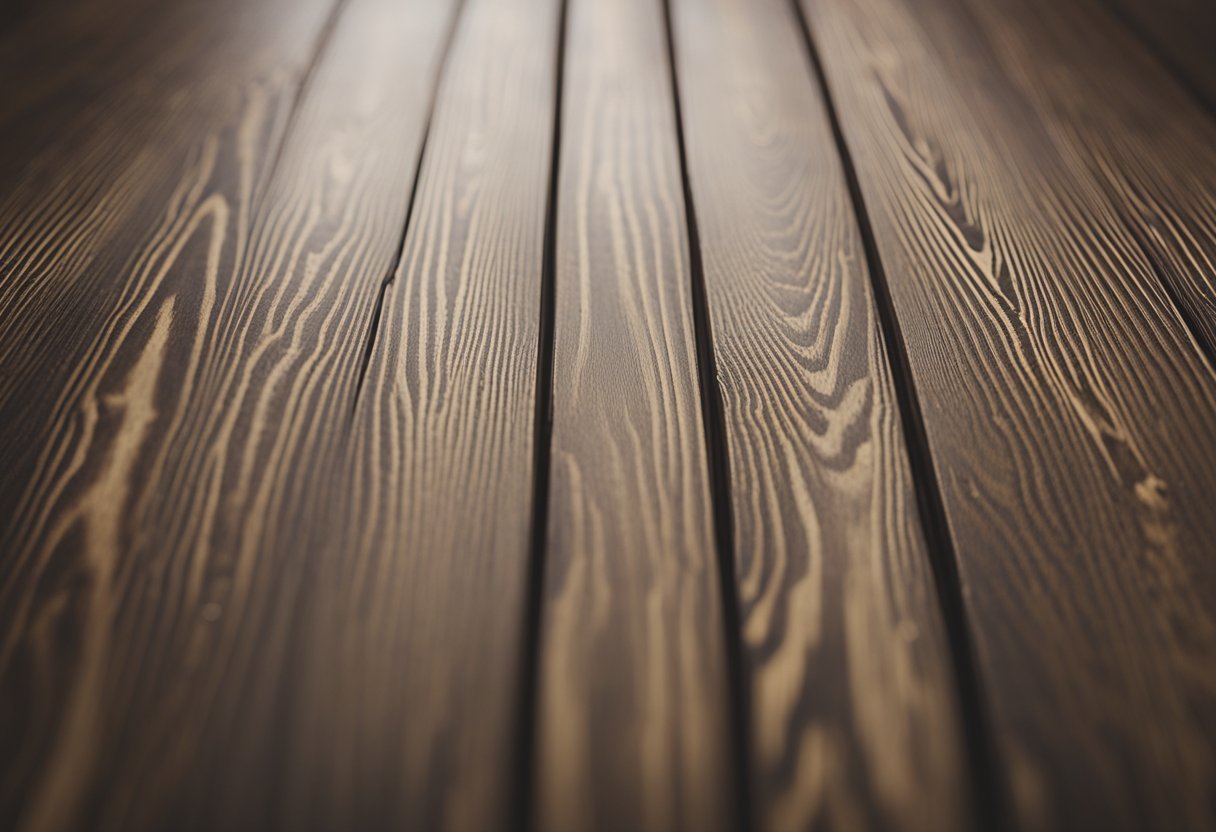
In conclusion, hollow spots under vinyl plank flooring can be a frustrating problem, but there are solutions available. It is important to ensure that the subfloor is level and free of debris before installation. This can prevent the formation of hollow spots and other issues that can arise from an uneven subfloor.
If hollow spots do form, there are several methods that can be used to fix them. One option is to inject a high-flex caulking into the hollow area to fill the space. Another option is to remove the affected planks and reinstall them after leveling the subfloor.
When considering flooring options, it is important to weigh the pros and cons of each type. Vinyl plank flooring is a popular choice due to its durability and ease of installation. However, it is important to note that it is not suitable for all subfloors. Carpet, laminate flooring, and floating floors are also popular choices for home improvement projects, each with their own unique benefits and drawbacks.
Overall, it is important to do your research and consult with professionals to ensure that you choose the right flooring for your home and avoid issues such as hollow spots under vinyl plank flooring.
Frequently Asked Questions
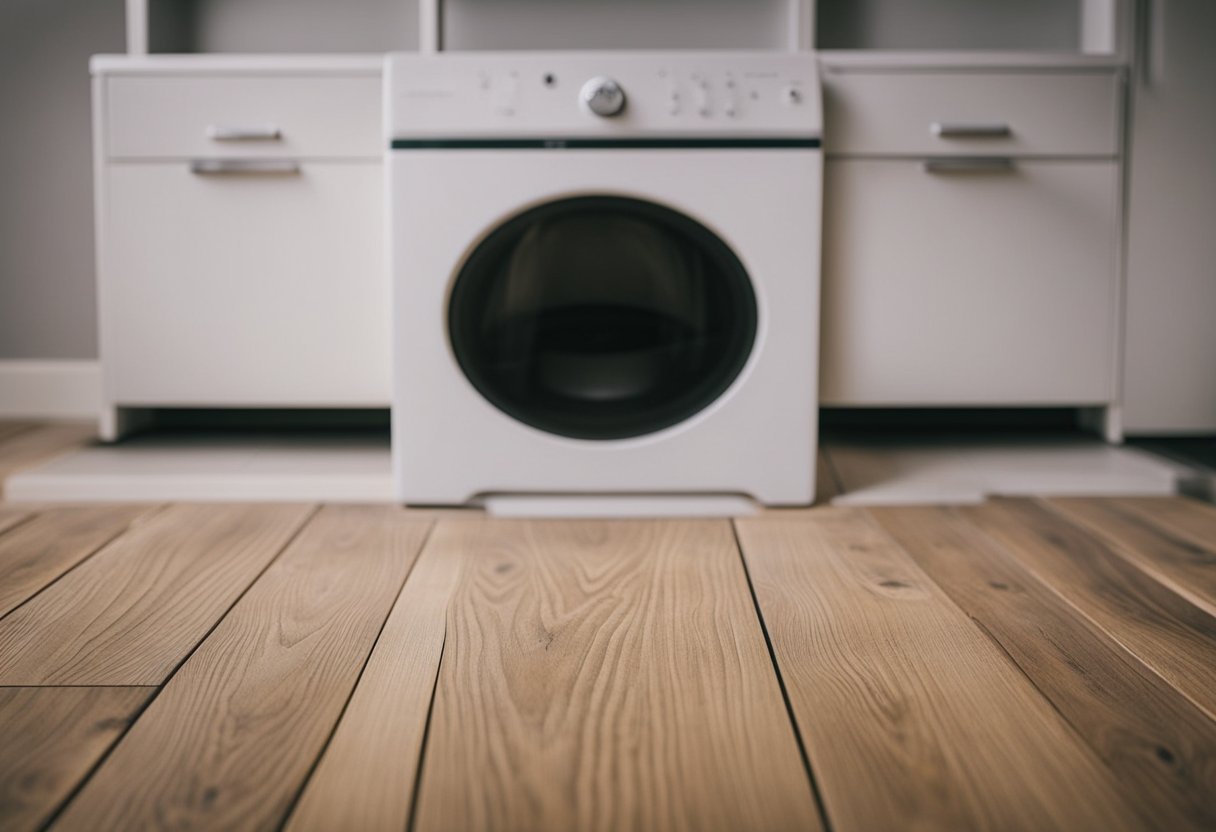
How to fix gaps in vinyl plank flooring?
Gaps in vinyl plank flooring can be fixed by using a floor gap fixer. These fillers come in various colors and can be used to fill gaps between the planks. However, it is important to note that some gaps may be too large to be filled with a gap fixer and may require the replacement of the affected planks.
What causes vinyl plank flooring to sound hollow?
Vinyl plank flooring can sound hollow if it is not installed properly. This can be caused by a lack of adhesive, uneven subfloor, or inadequate acclimation of the planks. In some cases, the hollow sound may be due to the presence of air pockets or gaps between the planks.
What are common mistakes when installing vinyl plank flooring?
Common mistakes when installing vinyl plank flooring include not acclimating the planks properly, not preparing the subfloor adequately, not using enough adhesive, and not leaving enough expansion space. These mistakes can lead to various issues such as buckling, warping, and gaps between the planks.
How to fix bubbles under vinyl plank flooring?
Bubbles under vinyl plank flooring can be fixed by using a needle and syringe to inject adhesive under the affected area. The adhesive will help to secure the plank and prevent further bubbling. It is important to address the issue as soon as possible to prevent further damage.
Can mold grow under luxury vinyl plank flooring?
Mold can grow under luxury vinyl plank flooring if there is moisture present. This can be caused by a leak or high humidity levels. To prevent mold growth, it is important to ensure that the subfloor is dry and that the planks are installed properly with adequate ventilation.
How to fix loose vinyl plank flooring?
Loose vinyl plank flooring can be fixed by using a floor adhesive to reattach the affected planks. It is important to clean the area thoroughly before applying the adhesive to ensure proper adhesion. In some cases, the affected plank may need to be replaced if it cannot be reattached properly.

Hi, I’m Sal Muller of Tooltrip.com. My DIY experience led me to understand essential power tools for home projects. Tooltrip.com guides enthusiasts and professionals in choosing right tools for any job. I provide concise top tool reviews for easier, efficient DIY.

